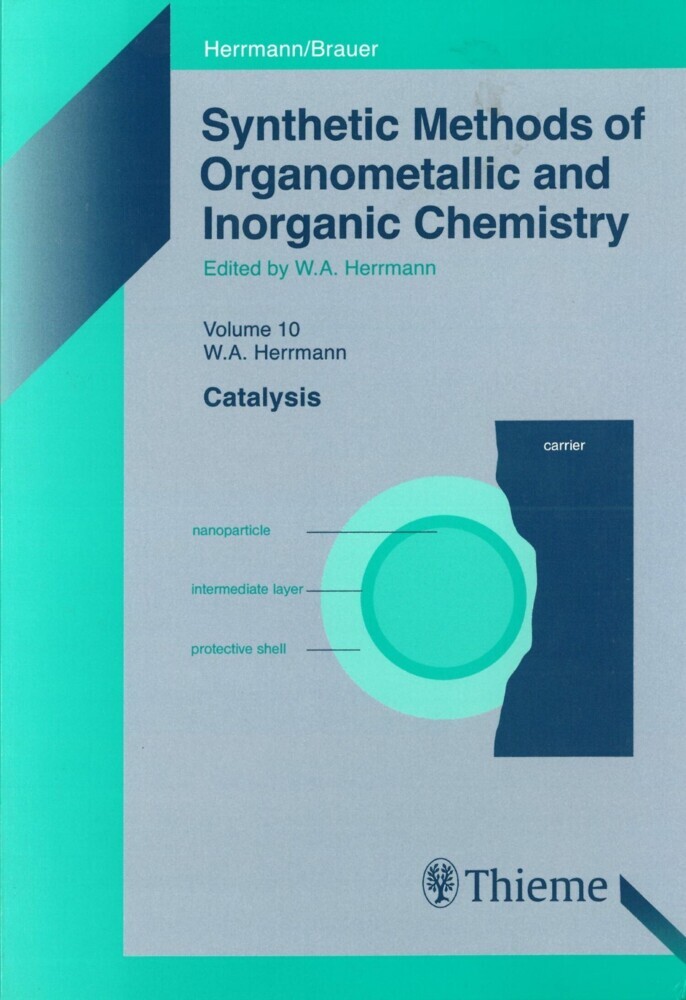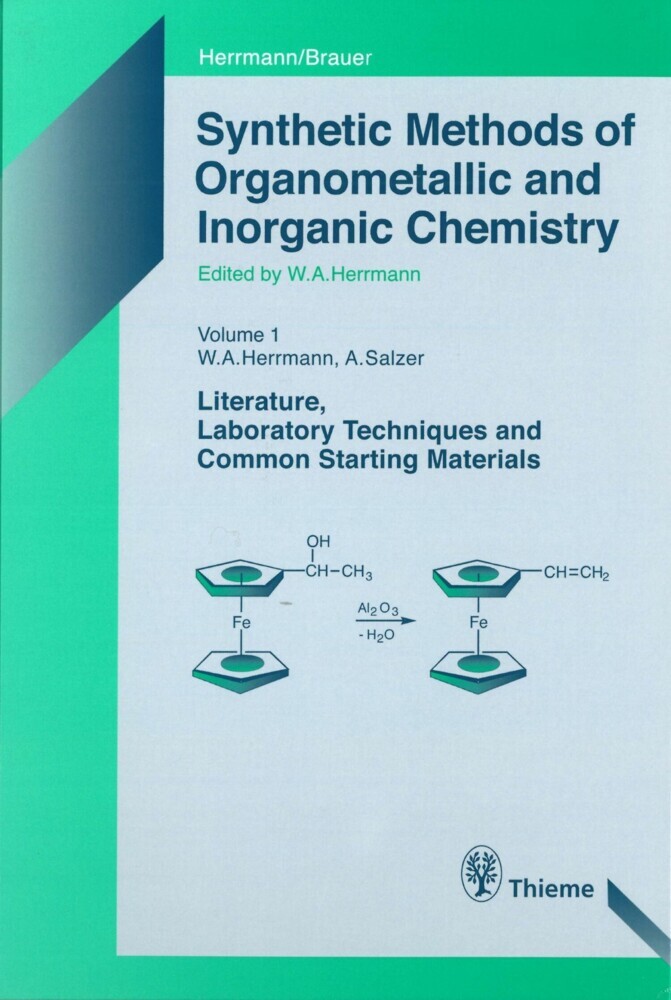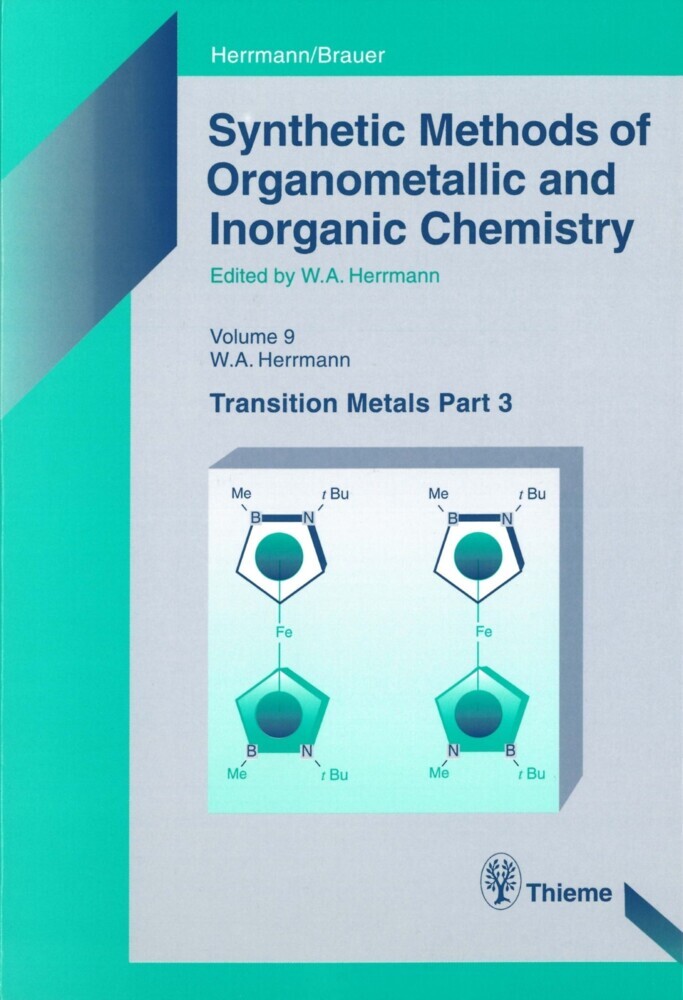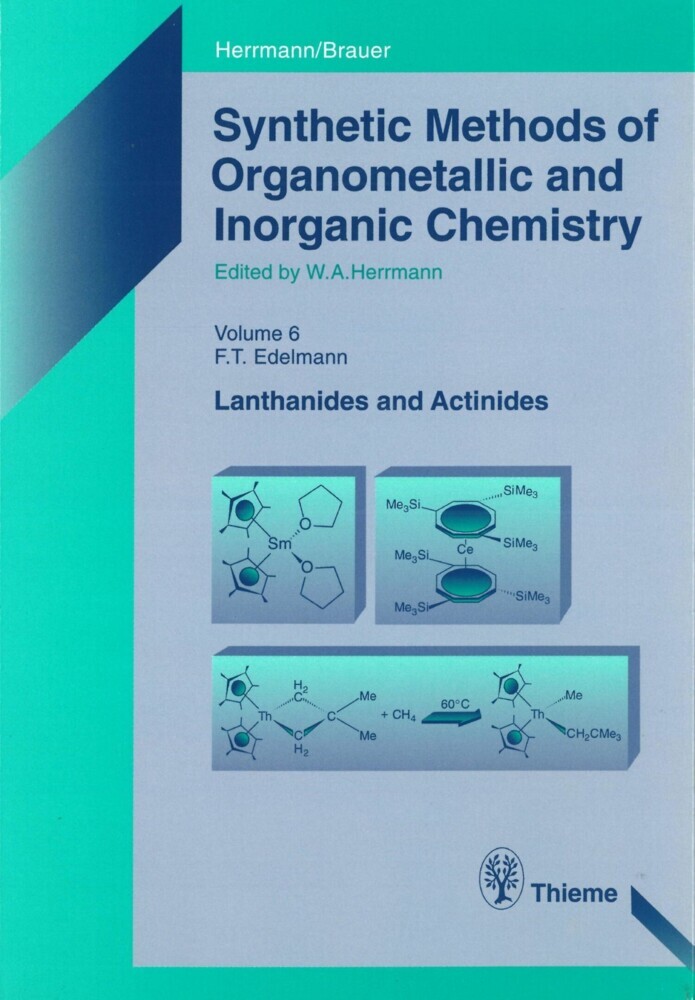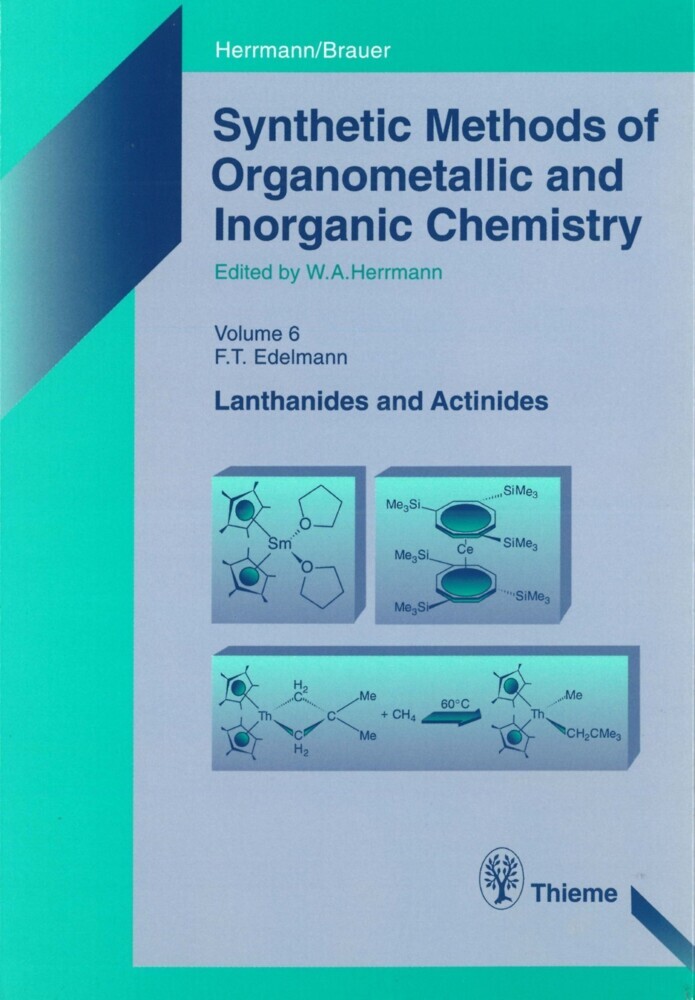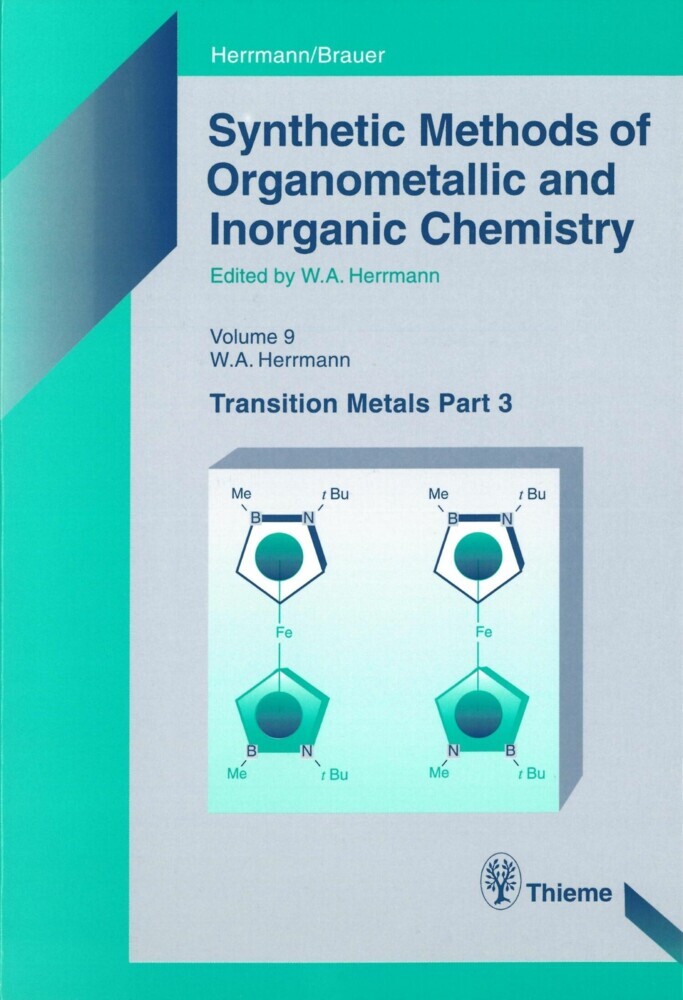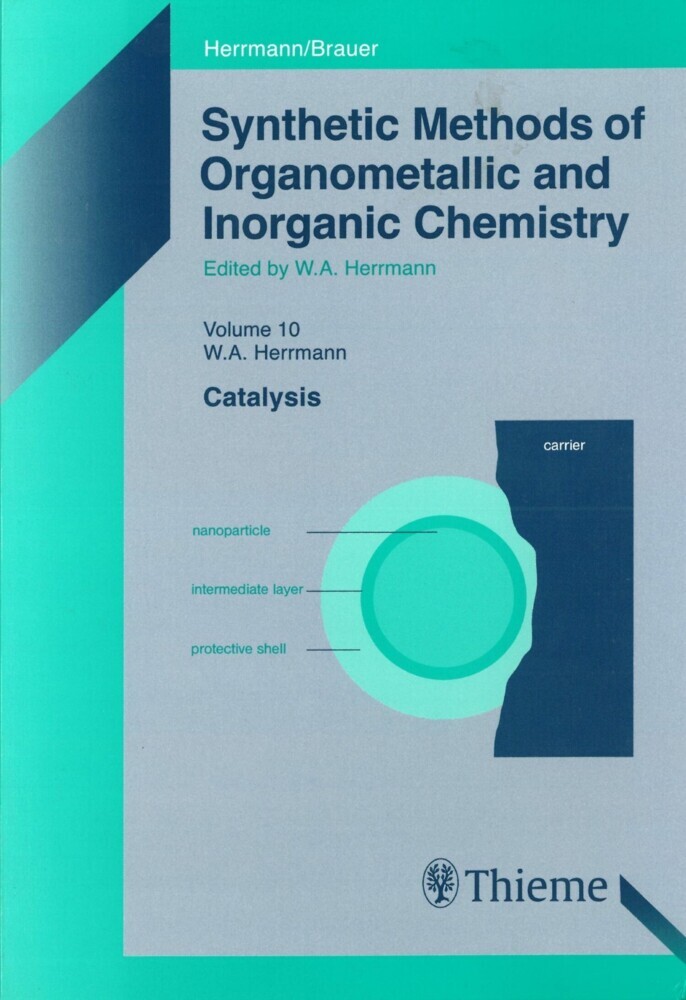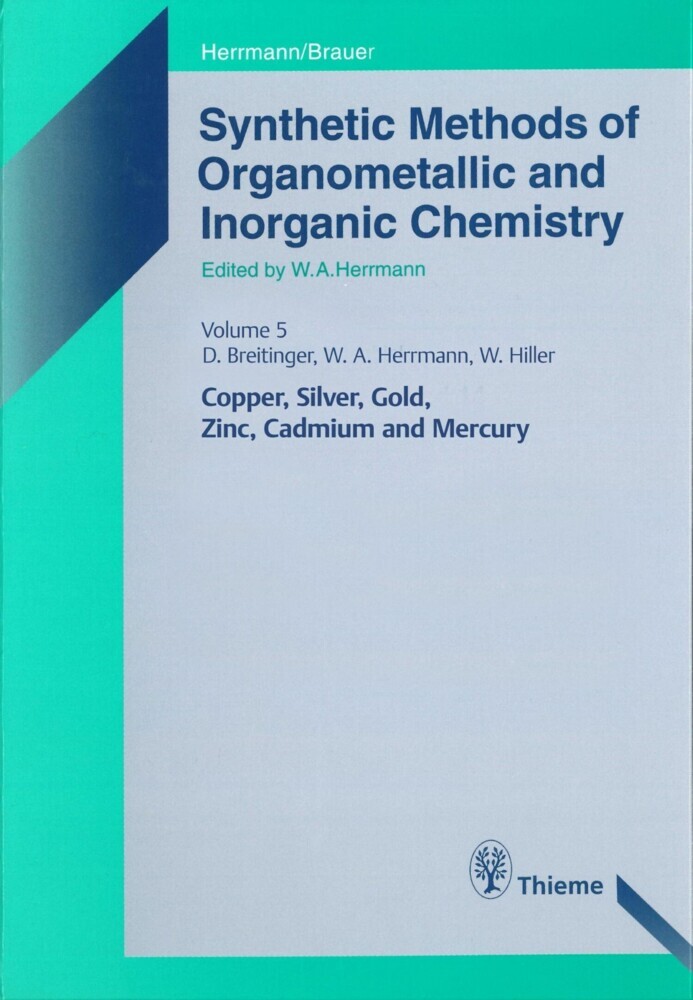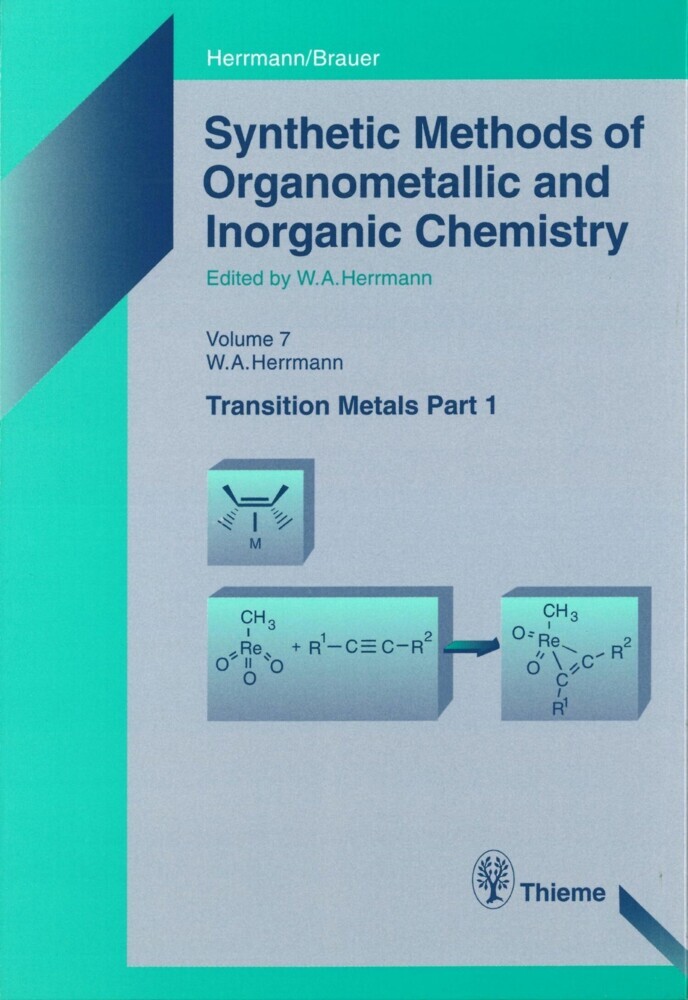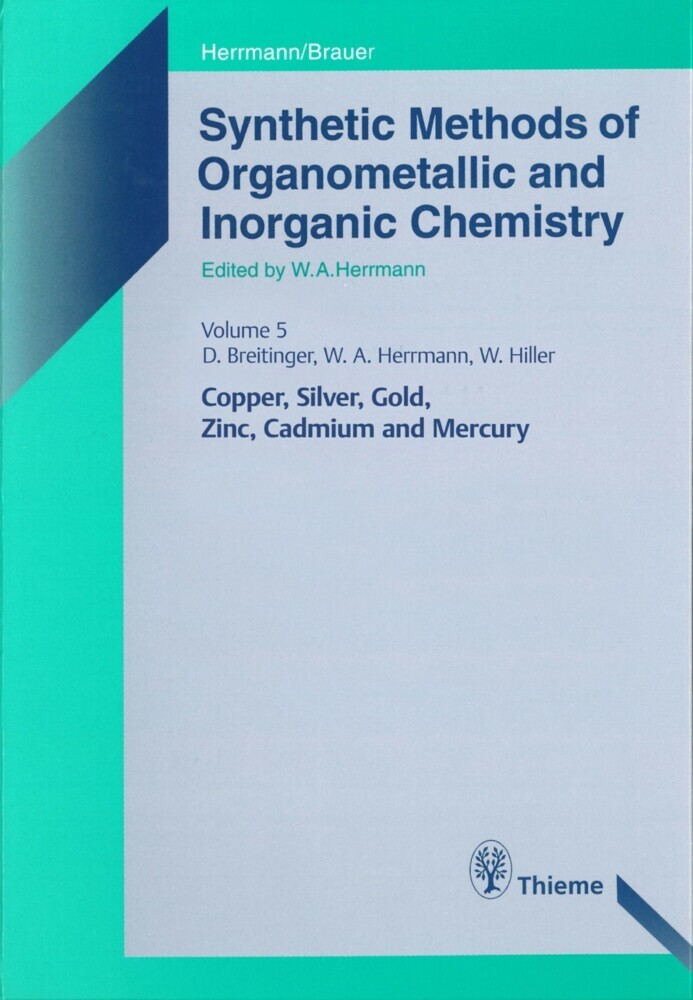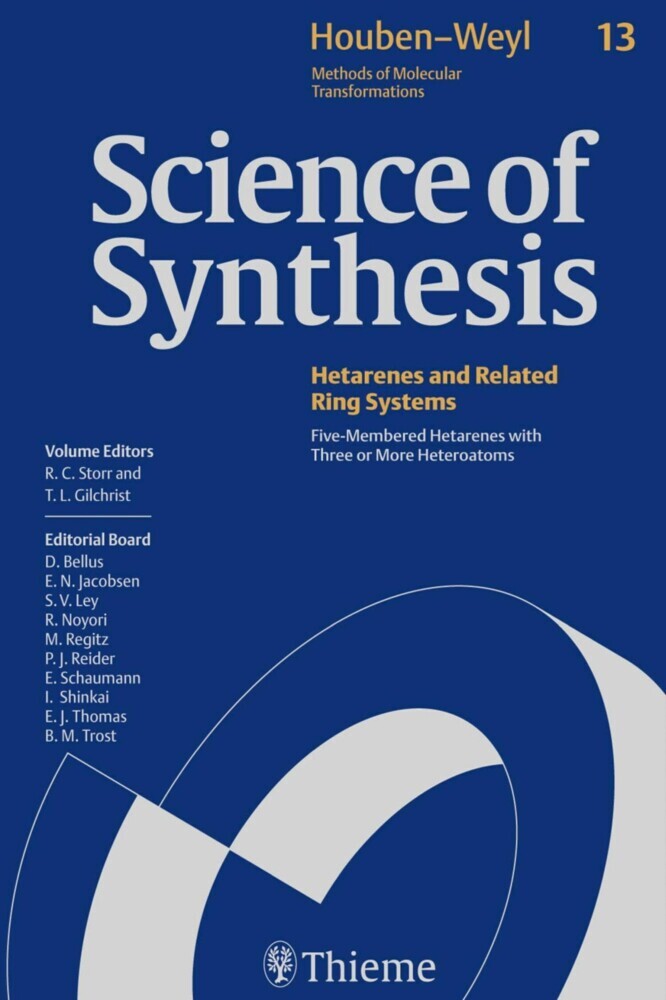Synthetic Methods of Organometallic and Inorganic Chemistry, Volume 10, 2002
Volume 10: Catalysis
Synthetic Methods of Organometallic and Inorganic Chemistry, Volume 10, 2002
Volume 10: Catalysis
Designed as a benchtop tool, the series includes detailed and reliable experimental procedures for the preparation of common but imp ortant starting compounds, organized according to the periodic table. Properties of the compounds and additional references are also provided. In most cases, no strict borderline has been drawn between inorganic and organometallic compounds. Instead, the material is conveniently presented so that for every group of elements, the various aspects of the chemistry are combined. Several hundred in ternational specialists with established expertise in their respective fields have contributed, resulting in proven and reliable pre parations. In view of the enormous growth of organometallic chemistry, Synthetic Methods of Organometallic and Inorganic Chemistry p rovides you with a balanced compilation of carefully selected and representative examples for all classes of compounds. // The conte nt of this e-book was originally published in 2002.
Wolfgang A. Herrmann, Georg Brauer
Wolfgang A. Herrmann, Georg Brauer
1;Preface to the Series Synthetic Methods of Organometallic and Inorganic Chemistry ;5 2;Preface to Volume 10;7 3;Contents;8 4;Chapter 1: Amido Ligands in Coordination Chemistry;15 4.1;1.1 Introduction;16 4.2;1.2 Amidinates;17 4.2.1;1.2.1 Ligands;17 4.2.2;1.2.2 Group 3 Metal and Lanthanide Complexes;18 4.2.3;1.2.3 Titanium and Zirconium Complexes;22 4.2.4;1.2.4 Complexes of the Vanadium Triad;26 4.2.5;1.2.5 Group 6 Metal and Later Transition Metal Complexes;28 4.3;1.3 Aminopyridinates;37 4.3.1;1.3.1 Ligands;37 4.3.2;1.3.2 Group 3 Metal and Lanthanide Complexes;39 4.3.3;1.3.3 Titanium and Zirconium Complexes;42 4.3.4;1.3.4 Complexes of the Vanadium Triad;48 4.3.5;1.3.5 Late Transition Metal Complexes;52 4.3.6;1.3.6 Heterobimetallics;54 5;Chapter 2: Hydroformylation and Hydroxycarbonylationof Alkenes; Formation of C-N and C-C Bonds;56 5.1;2.1 Introduction;57 5.1.1;2.1.1 Synthesis of Tris(2-tern-butyl-4-methylphenyl) Phosphite ;57 5.1.2;2.1.2 The Hydroformylation Process;57 5.2;2.2 Asymmetric Hydroformylation of Styrene;59 5.2.1;2.2.1 Synthesis of Chiral Diphosphite 4 and its Complex HRh(4)(CO)2 ;59 5.2.2;2.2.2 Asymmetric Hydroformylation;62 5.3;2.3 Palladium-Catalyzed Biphasic Hydroxycarbonylation of Alkenes;64 5.3.1;2.3.1 Preparation of Catalysts;64 5.3.2;2.3.2 Hydroxycarbonylation of Alkenes;65 5.4;2.4 Rhodium-Catalyzed Hydroformylation of Internal Olefins to Linear Aldehydes;67 5.4.1;2.4.1 Synthesis of Phosphine Ligands;68 5.4.2;2.4.2 Hydroformylation of Internal Alkenes;71 5.5;2.5 Application of (PP)Pd(Ar)(X) Catalysts in the Amination of Aryl Bromides;72 5.5.1;2.5.1 Preparation of Catalysts;73 5.5.2;2.5.2 Palladium-Catalyzed Coupling of 2-Methoxyaniline (o-Anisidine) with Bromobenzene;74 5.6;2.6 Fast Heck Reaction using Bulky Monodentate Phosphorus Ligands;75 5.6.1;2.6.1 Synthesis of [(Phosphorus Amidite)Pd(t-Br)(p-C6H4CN)}2 ;75 5.6.2;2.6.2 Palladium -Catalyzed Coupling of Styrene with Iodobenzene;76 6;Chapter 3: Rhodium Atom-Derived Catalysts in the Hydroformylation of 1,3-Dienes and Hydrosilylation of Aromatic Nitriles;78 6.1;3.1 Introduction;79 6.2;3.2 Preparation of the Catalysts;79 6.2.1;3.2.1 Rhodium Solvated Metal Atoms: Catalyst A;79 6.2.2;3.2.2 Rhodium Dust: Catalyst B;80 6.2.3;3.2.3 Rhodium on y-Al203: Catalyst C;80 6.3;3.3 Hydroformylation of 1,3-Dienes with Rhodium Solvated Metal Atoms - Catalyst A;80 6.4;3.4 Hydrosilylation of Aromatic Nitriles with Rhodium Dust and Rhodium on . -Al203;82 7;Chapter 4: In Situ Catalysts in Enantioselective Organic Transformations;86 7.1;4.1 Introduction;87 7.2;4.2 Enantioselective Hydrogenation of Z-(a)-N-Acetamidocinnamic Acid;87 7.3;4.3 Enantioselective Hydrosilylation of Acetophenone with Diphenylsilane;89 7.4;4.4 Enantioselective Synthesis of 4-Phenyldeltacyclene;90 8;Chapter 5: Enantioselective Hydrogenations;92 8.1;5.1 Application of Solvias Josiphos Complexes for the Enantioselective Hydrogenation of Selected C=N, C=C and C=0 Functions;93 8.1.1;5.1.1 Introduction;93 8.1.2;5.1.2 Catalysts;93 8.1.3;5.1.3 Hydrogenation Procedure;94 8.1.4;5.1.4 Discussion;95 8.1.5;5.1.5 Conclusions;97 8.2;5.2 Immobilized Rh- and Ir-Diphosphine Complexes for Enantioselective Hydrogenation;97 8.2.1;5.2.1 Introduction;97 8.2.2;5.2.2 Immobilization of Functionalized Diphosphine Ligands;98 8.2.3;5.2.3 Discussion of Immobilized Catalysts;100 8.2.4;5.2.4 Catalysts Precursors;101 8.2.5;5.2.5 Hydrogenation Procedures;102 8.2.6;5.2.6 Discussion of Hydrogenation Reactions;103 8.2.7;5.3 Application of Cinchona-Modified Pt/Al203 Catalysts for the Enantioselective Hydrogenation of a -Functionalized Ketones;104 8.2.7.1;5.3.1 Introduction;104 8.2.7.2;5.3.2 Catalyst Types and Pretreatment;104 8.2.7.3;5.3.3 Modifiers;105 8.2.7.4;5.3.4 Hydrogenation Procedure;106 8.2.7.5;5.3.5 Scope of the Method;107 9;Chapter 6: Application of Cp*-Ruthenium(II) Catalysts in Stereoselective Hydrogenation of Sorbic Acid;108 9.1;6.1 Introduction;109 9.2;6.2 (Pentamethylcyclopentadienypl)ruthenium(.4-Sorbic Acid) Tr
Herrmann, Wolfgang A.
Herrmann, Wolfgang A.
| ISBN | 9783131792617 |
|---|---|
| Artikelnummer | 9783131792617 |
| Medientyp | E-Book - PDF |
| Copyrightjahr | 2014 |
| Verlag | Georg Thieme Verlag KG |
| Umfang | 253 Seiten |
| Sprache | Englisch |
| Kopierschutz | Digitales Wasserzeichen |

